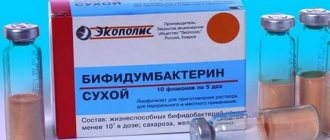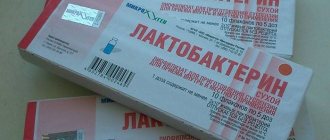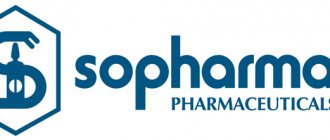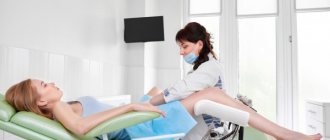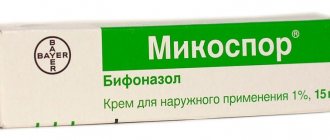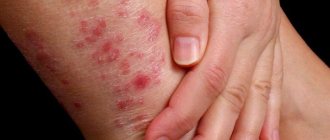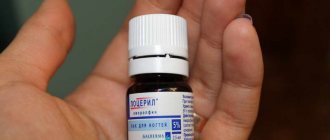Instructions for use of Sextaphage
According to the accepted medical classification, the drug Sextaphage belongs to the group of immunobiological drugs based on bacteriophages. Its purpose is to destroy harmful microflora of the upper respiratory tract with special viruses. Due to its balanced complex composition, the antiseptic medication can be used in a wide spectrum of action.
Composition and release form
Sextaphage polyvalent is available only in the form of a solution; the medicine has no other forms. Composition and description are shown in the table:
| Description | Transparent yellow-green liquid |
| Compound | Filtrate of phagolysates of bacteria Staphylococcus, Streptococcus, Proteus vulgaris and mirabilis, Pseudomonas aeruginosa Escherichia coli, Klebsiella pneumoniae |
| Active components | Preservative hydroxyquinoline sulfate monohydrate |
| Package | 4 or 10 bottles of 20 ml in a cardboard box with instructions for use |
Pharmacodynamics and pharmacokinetics
Bacteriophage Sextaphage is a polyvalent pyobacteriophage with the ability to completely lyse the bacteria staphylococcus, streptococcus, enterococcus, Klebsiella, pseudomonas aeruginosis, Pseudomonas aeruginosa and Escherichia coli. These bacteriophages in the drug are viruses that receive nutrition from bacterial cells. Phages are able to attach to the bacterial cell membrane and penetrate inside it.
In addition to nutrition, the bacteriophage receives material for reproduction from the carrier cell. This leads to the dissolution of bacteria. New mature phages infect neighboring pathogenic cells and destroy them. Depending on the type of phage, the cell dissolves in 15-60 minutes. Each bacteriophage has its own spectrum of action - it affects only a certain type of microorganisms and does not affect others. Phages have a protein coat and genetic material, are an excellent alternative to antibiotics, and do not cause negative effects on the intestines.
Indications for use
Pyobacteriophage Sextaphage, according to the instructions for use, has its indications for the treatment and prevention of purulent-inflammatory and enteric diseases. The medicine treats the following diseases caused by staphylococci, streptococci, Proteus, Pseudomonas aeruginosa, Escherichia coli, Klebsiella:
- tonsillitis, pharyngitis, tracheitis, bronchitis, pleurisy, laryngitis and other diseases of the ENT organs, including inflammation of the sinuses (sinusitis, runny nose) and otitis media (inflammation of the middle ear);
- in surgery - suppuration of wounds, abscess, burns with associated infection, phlegmon, boils, carbuncles, felons, bursitis, hidradenitis, mastitis, paraproctitis, osteomyelitis;
- in proctology, infections of the urogenital tract - colpitis, cystitis, salpingoophoritis, urethritis, endometritis, pyelonephritis;
- post-traumatic conjunctivitis, purulent ulcer of the cornea, keratoconjunctivitis, iridocyclitis;
- gastroenterocolitis, dysbacteriosis, cholecystitis, peritonitis, pemphigus, enteritis;
- generalized sepsis, prevention of nosocomial infections, pneumonia;
- in newborns - omphalitis, sepsis, pyoderma, gastroenterocolitis, conjunctivitis.
pharmachologic effect
When taken, it has an antibacterial effect. Polyvalent bacteriophage is capable of destroying the following microorganisms:
- Pseudomonas aeruginosa;
- Staphylococcus aureus;
- Proteus mirabilis, Proteus vulgaris;
- Klebsiella pneumoniae;
- pathogenic strains of staphylococci and streptococci.
The polyvalent bacteriophage is capable of destroying Staphylococcus aureus.
After lysis, the drug effectively cleanses the body of bacterial metabolic products.
Pharmacodynamics
The antimicrobial effect is due to the viruses (phages) included in the pyobacteriophage, which receive nutrition due to the destruction of pathogenic microorganisms. When an infectious agent is detected, phages begin to adhere (adhesion occurs) to the microbial cell membrane, after which the virus splits the membrane and penetrates the bacterial cytoplasm. When ingested, the outer protein shell of the bacteriophage collapses, releasing a chain of viral RNA into the intracellular space.
After the penetration of the genetic material into the pathogenic strain, the virus begins to multiply, using the structural material and nutrients of the carrier microorganism as energy. As a result of virus division, the microbe dissolves. Mature bacteriophages begin to infect the following infectious pathogens. The time to achieve a therapeutic effect depends on the phage variety. On average, the destruction of pathogenic microflora takes from 15 to 60 minutes.
Pharmacokinetics
Infectious pathogens die within an hour. After the complete destruction of the bacterial microflora, the virus has no carriers left for reproduction and nutrition, which is why the components of the drug are destroyed and excreted along with bacterial metabolites through the kidneys or along with feces.
The components of the drug are destroyed and excreted along with bacterial metabolites through the kidneys or along with feces.
How to take Sextaphage
Before using Sextaphage, the bottle must be shaken to make sure that the contents are clear and free of sediment. When opening the package, you should follow a number of rules that will help prevent bacteria from entering the nutrient medium from the outside:
- wash your hands thoroughly;
- treat the cap with a product containing alcohol;
- remove the cap without opening the stopper;
- do not place the cork with the inner surface on a table or other surface;
- do not leave the bottle open;
- Store opened packaging in the refrigerator;
- when using up to 2-8 drops, use a sterile syringe.
Treat inflammatory diseases with associated purulent infection and localized lesions locally; according to clinical indications, you can take the drug orally for 7-30 days. An approximate treatment plan depends on the type of disease:
- For local irrigation, lotions and packing, use up to 200 ml of liquid depending on the size of the lesion and swelling. For abscesses, liquid phage is injected into the cavity of the lesion, after removing the pus using a puncture. The amount of liquid depends on the volume of pus (should be slightly less). For osteomyelitis, 10-20 ml of bacteriophage are injected into the wound.
- For administration into the pleural, articular and other cavities, up to 100 ml of Sextafagi is used. After insertion, a capillary drainage is left, and the medicine is refilled through it a few days later.
- In gynecology, for purulent-septic diseases, Sextafag is injected 5-10 ml into the cavity of the vagina and uterus. The procedure is performed once every day until signs of the disease disappear.
- Treatment of conjunctivitis and keratoconjunctivitis involves instilling 2-3 drops 4-5 times a day. For a double corneal ulcer, 4-5 drops are administered, for purulent iridocyclitis - 6-8 drops every three hours. You can combine treatment with taking the drug orally.
- Stomatitis and chronic generalized periodontitis are treated by rinsing the mouth 3-4 times a day with 10-20 ml of Sextaphage. At the same time, turundas impregnated with pyobacteriophage are introduced into the periodontal pockets. The exposure course is 5-10 minutes.
- Intestinal forms of diseases, diseases of internal organs, dysbiosis suggest the use of the drug orally or rectally in the form of enemas for a course of 7-20 days. Sextaphage is taken orally three times a day on an empty stomach an hour before meals, rectally - once a day instead of one dose orally. The dosage depends on the patient's age:
| Age | Oral dose, ml | Enema dosage, ml |
| 0-6 months | 5 | 10 |
| 6-12 months | 10 | 20 |
| 1-3 years | 15 | 25 |
| 3-8 years | 20 | 35 |
| Over 8 years old | 25 | 45 |
Into the nose
Sextafag is excellent for treating a runny nose and purulent-inflammatory diseases of the nose, ear and throat. To do this, the drug is instilled into the nostrils, 2-10 ml 1-3 times a day. You can moisten cotton pads with liquid and insert them into the nasal passages for an hour. If you have a severe runny nose or nasal congestion, you can rinse your nose with a solution - to do this, it is drawn in through each nostril in turn and released through the mouth. The throat is treated by gargling with the drug.
Inhalations
Nebulizers are used to treat children. They help inhale small particles of medicine. Inhaling the particles allows them to penetrate deeper into the lungs, which speeds up the healing process. For inhalation, Sextaphage is diluted with saline in a 1:1 ratio, applied twice a day, 2 ml for adults and 1 ml for children. The course of treatment lasts a week, then a seven-day break, and the course is repeated. You can combine inhalation with oral administration of the drug.
For bronchitis
In case of severe bronchitis, doctors prescribe Sextaphage to be taken orally - drink 40 ml twice a day. To treat the disease in young children, you need to instill 2-3 drops into the nose and the same amount into the pharynx. After taking it, you should not eat or drink for 10 minutes. The course of treatment is a month, it is advisable to carry out the procedure three times a day. After this, a smear is given for bacteria; if they are absent, you can stop taking the drug.
For cystitis
For the treatment of cystitis, pyelonephritis, urethritis and other diseases of the genitourinary system, the drug is taken orally three times a day in a dosage depending on the patient’s age (from 5 to 25 ml). When draining the cavity of the bladder or renal pelvis, the bacteriophage is administered through a cytostomy or nephrostomy 1-2 times a day. The dosage for the bladder is 20-50 ml, for the renal pelvis - 5-7 ml.
For sore throat
The drug can treat inflammation of the throat, ear, sinusitis, runny nose and sore throat. It is also used to prevent infections, colds and flu. If you have a sore throat, you should gargle and leave the solution on your tonsils up to 2-3 times a day. You can use 10-20 ml of Sextaphage during each procedure. A combination with oral administration of the solution is recommended.
For adenoids
If the tonsils (adenoids) are inflamed, doctors recommend gargling with Sextaphage, irrigating the oral mucosa with it and additionally instilling it into the nose. After rinsing, you can swallow the used solution for better effects. After removal of the tonsils, the liquid is used in the form of a spray to irrigate the oral cavity to prevent infection.
special instructions
When using pyobacteriophage solution, it is recommended to take precautions. They are described in the special instructions section of the instructions:
- the solution foams a lot, so you should not put a large amount of it in your mouth;
- Shake the bottle before use; if it becomes cloudy, do not take it;
- for a successful treatment result, it is first recommended to test the phage sensitivity of the pathogen;
- for the treatment of infants, the liquid can be mixed with breast milk;
- According to reviews, the drug does not affect the concentration of attention and the speed of psychomotor reactions, so it can be used while driving vehicles and dangerous mechanisms.
- Do-it-yourself elastic bands made from satin ribbons: master class with photos and videos
- HIV infection - how it is transmitted. Symptoms of human immunodeficiency virus and treatment, diagnosis and prevention
- Chicken roll in a bottle: recipes with photos
Sextaphage for children
Starting from the first days of life, you can use Sextaphage for children. For sepsis, enterocolitis in newborns and premature infants, enemas are used through a gas tube, probe or catheter 2-3 times a day. If there is no vomiting or regurgitation, then the drug is given orally in a mixture with breast milk. You can combine rectal and oral administration of the drug. The course of treatment lasts 5-15 days.
If the disease relapses, the courses are repeated again. To prevent sepsis and enterocolitis during intrauterine infection or when there is a risk of developing a nosocomial infection, newborns are given enemas twice a day for a course of 5-7 days. To treat wounds in children: first they are wiped with a sterile solution of sodium chloride or soda, then a bacteriophage is applied. In the treatment of omphalitis and pyoderma, the solution is used in the form of applications. A gauze pad is moistened with the solution and applied to the umbilical wound or skin twice every day.
Reviews from doctors
Andrey Zinchenko, ENT doctor, Yekaterinburg
I prescribe it to my patients for upper respiratory tract infections. The drug does not require any additional research other than identifying the pathogen. Can be prescribed to adults, pregnant women, and children without fear of side effects. The drug helps eradicate microbes and treats dysbiosis. Helps well in the presence of Staphylococcus aureus.
Sergey Khistanov, surgeon, Krasnoyarsk
The same antibiotic, but without consequences in the form of dysbacteriosis, superinfections, diarrhea or side effects. Pathogenic bacteria do not develop resistance. Children are allowed to be treated with it from birth. At the same time, it does not cause vomiting, because it is tasteless. The only drawback is it's expensive. If you buy for 10 days, it will cost more than 3,000 rubles. Storage only in the refrigerator.
Analogs
The drug is unique because it contains a certain number of bacteriophages that act selectively on bacterial species. A close analogue of the drug is Bacteriophage, which acts on staphylococci, streptococci, typhoid, and dysentery pathogens. Other drug substitutes:
- Pyobacteriophage - acts on seven pathogens.
- Dysenteric polyvalent - eliminates the manifestations of dysentery.
- Staphylococcal bacteriophage - affects only staphylococcus.
- Bacteriophage Intesti is effective against salmonellosis.
Price
You can buy the drug through pharmacies or online platforms at prices depending on the number of bottles in the package and the trade markup. The approximate cost for 4 bottles of 20 ml of the drug is indicated below:
| Pharmacy name | Price, in rubles |
| Beauty and health laboratory | 676 |
| WER.RU | 656 |
| ZdravZone | 753 |
| Pharmacy IFC | 767 |
| Baltika-Med | 735 |
| Social Pharmacy | 720 |
| Help window | 786 |
| Vitamin | 745 |
Conditions for dispensing from pharmacies
Before visiting a pharmacist if you have an infectious-inflammatory process, you must undergo a medical examination and take tests to accurately determine the pathogenic pathogen.
Before visiting a pharmacist, it is necessary to undergo tests to accurately determine the pathogenic pathogen.
Is it sold without a prescription?
Can be purchased without a doctor's prescription.
What is the price
The average cost for 20 ml ampoules, 4 pieces in a cardboard box, ranges from 650 to 790 rubles.

